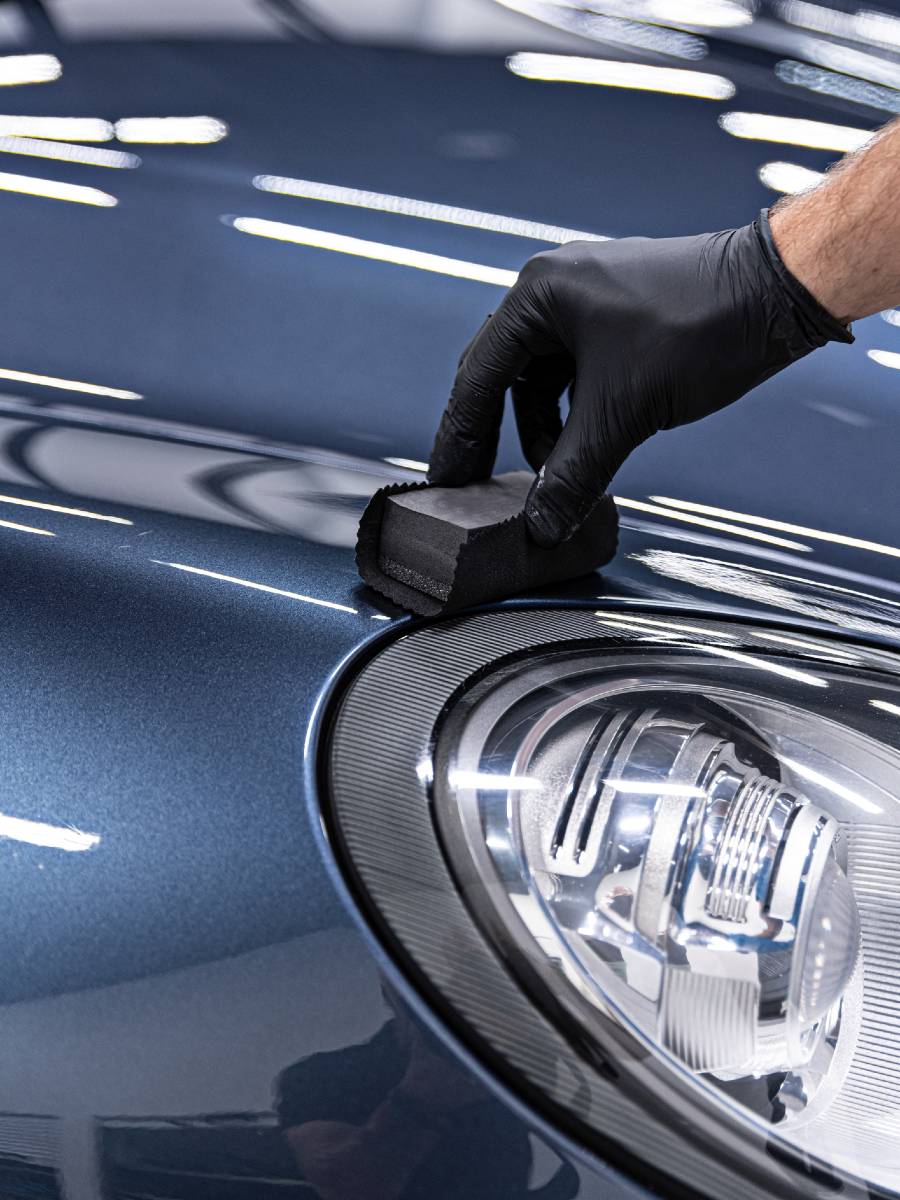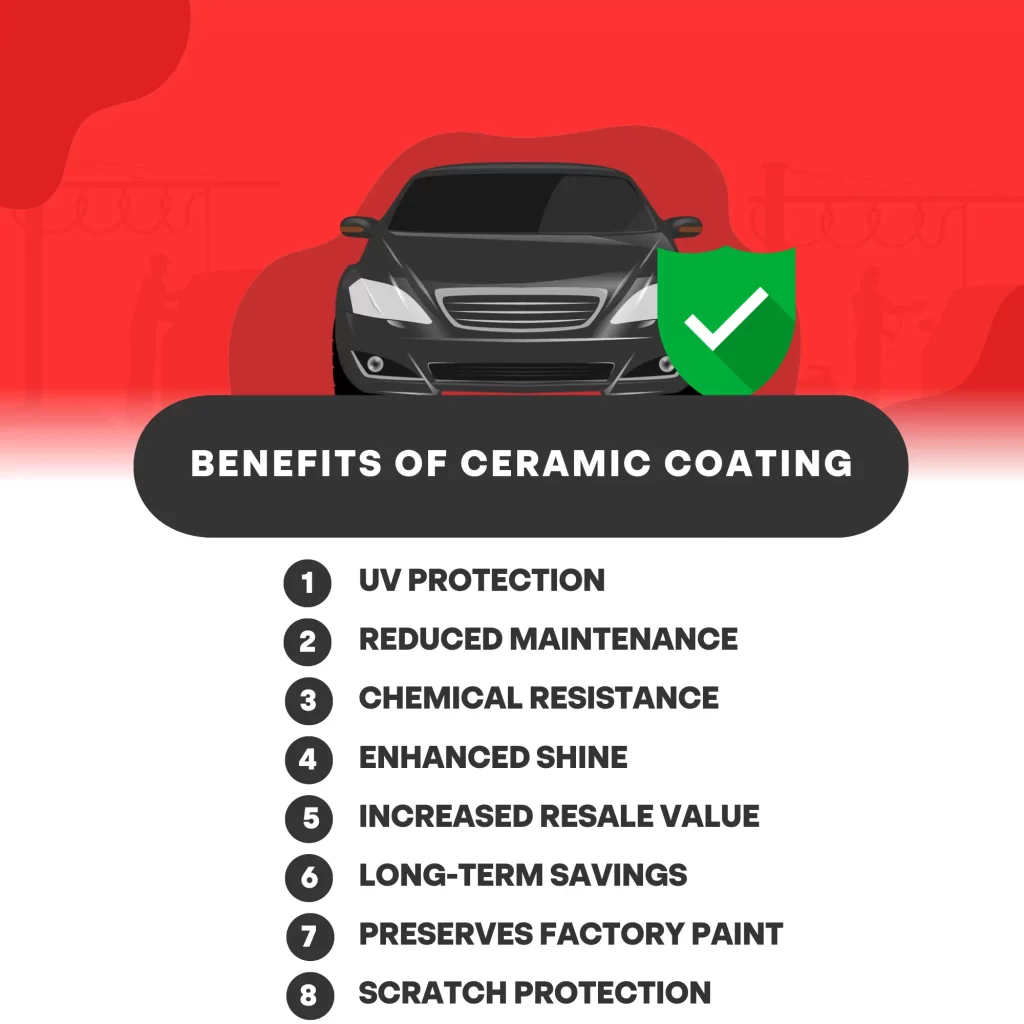Ceramic Coating for Cars: The Ultimate Solution for a Glossy Finish
Ceramic Coating for Cars: The Ultimate Solution for a Glossy Finish
Blog Article
Ceramic Finishing vs. Conventional Wax: Which Provides Much Better Long-Term Security?
The argument in between ceramic finishes and traditional wax for lorry security has actually gathered considerable focus amongst automotive lovers and professionals alike. Ceramic finishes boast superior long life and resistance to ecological variables, yet the complexity of their application elevates questions concerning availability and functionality.
Review of Ceramic Covering
Ceramic coating has actually acquired substantial popularity among vehicle lovers and detailers alike as a result of its innovative safety qualities. This innovative modern technology is created to produce a sturdy, hydrophobic shield over a lorry's paint surface area, substantially improving its resistance to environmental impurities such as dirt, UV rays, and chemical spots. Unlike conventional wax, which gives a momentary layer of security, ceramic finishes bond at a molecular level with the paint, using resilient toughness-- usually prolonging beyond 2 years with proper upkeep.
The application process entails meticulous prep work of the lorry's surface area, consisting of cleansing and polishing to guarantee optimum bond. Once applied, the finish treatments to form a durable layer that not only adds depth and gloss to the paint but also streamlines maintenance. With its hydrophobic homes, ceramic finishing allows water and dust to move off more quickly, decreasing the frequency of washes and minimizing the threat of swirl marks.
Moreover, ceramic coatings are readily available in numerous formulations, allowing customers to pick products tailored to their particular demands and choices. In general, ceramic finishing represents a substantial advancement in paint security technology, providing remarkable performance contrasted to standard alternatives.
Summary of Conventional Wax
Typically considered as a staple in auto treatment, wax works as a preferred selection for those looking for an uncomplicated approach to improve and secure their automobile's paint - ceramic coating. Automotive wax generally consists of all-natural active ingredients, such as carnauba, or artificial compounds, developed to create a safety layer externally of the paint. This layer not just boosts the vehicle's gloss and radiate but likewise provides an obstacle against ecological pollutants
The application of wax is normally user-friendly, making it accessible for both specialists and DIY lovers. It can be used by hand or equipment, permitting adaptability in the outlining procedure. When applied, wax needs a treating duration, after which it solidifies to create a protective covering. Wax is likewise understood for its capability to push back water, advertising a beading impact that helps in the prevention of water places and corrosion.
Nonetheless, while wax works for boosting the visual appeal of an automobile, it is necessary to keep in mind that the security it provides might demand much more frequent reapplication compared to different products, such as ceramic coatings. Overall, typical wax stays a popular alternative for those prioritizing convenience of use and immediate aesthetic renovation.
Toughness and Durability Comparison
While both ceramic finishes and standard wax deal safety advantages for automobile paint, their sturdiness and durability vary considerably. Standard wax, generally made from natural carnauba or synthetic polymers, typically gives a protective layer that lasts about three to 6 months. This relatively short life expectancy demands normal reapplication to preserve optimum security.
On the other hand, ceramic layers are engineered from advanced nanotechnology, creating a covalent bond with the paint surface area. This leads to a robust, hydrophobic layer that can withstand for 2 to five years, relying on the item and ecological conditions. The exceptional longevity of ceramic finishes is connected to their chemical framework, which provides boosted resistance to scratches, UV rays, Visit Website and oxidation.

Protection Versus Ecological Elements
Shielding a vehicle's paint from ecological elements is critical for preserving its appearance and worth gradually. Automobiles are continuously subjected to a range of aspects, consisting of UV rays, bird droppings, tree sap, acid rain, and road crud, every one of which can endanger the stability of the paintwork.
Ceramic layers supply a durable protection against these ecological assailants. Unlike typical wax, which can weaken promptly under UV direct exposure, ceramic coverings create a long lasting, hydrophobic layer that stands up to the harmful results of sunlight and environmental toxins. This sophisticated innovation creates a chemical bond with the lorry's surface area, offering superior defense that lasts for several years, also in severe problems.
Standard wax, while less complicated to apply, usually calls for constant reapplication and provides restricted resistance to impurities and UV rays. Gradually, it can break down, leaving the paint prone to scratches and oxidation. In contrast, ceramic finishes keep their protective high qualities longer, substantially decreasing the danger of paint damage and making sure that the lorry keeps its aesthetic appeal. As a result, ceramic coatings are progressively recognized as the superior selection for long-lasting security against environmental variables.
Application and Maintenance Differences
The approaches of application and succeeding upkeep for ceramic finishings and traditional wax differ dramatically, impacting the general customer experience and effectiveness of each item. Ceramic finishes need a more elaborate application process, generally involving surface prep work that includes washing, sanitizing, and brightening the lorry. When the surface is all set, the ceramic coating is applied in a controlled setting, frequently requiring specialist expertise to ensure appropriate healing and bonding to the paint.

While both items enhance lorry look, the longer-lasting protection provided by ceramic coverings may justify their initial financial investment, despite the even more demanding application procedure. Conversely, typical wax continues to be a prominent choice for those looking for a simpler, albeit temporary, option.

Conclusion
Finally, ceramic finishings demonstrate substantial benefits over traditional wax in regards to toughness and environmental management. With a lifespan prolonging two to five years and exceptional resistance to UV rays, dirt, and chemical stains, ceramic coatings provide a more effective service for lasting automobile maintenance. The application procedure may need professional expertise, the resulting cost savings and lowered frequency of reapplication emphasize the worth of ceramic coatings for those looking for optimal vehicle security.
The dispute in between ceramic layers and traditional wax for lorry protection has actually gathered substantial interest among vehicle fanatics and experts alike. Unlike conventional wax, which offers a temporary layer of security, ceramic finishings bond at a molecular level with the paint, providing long-lasting resilience-- typically expanding past two years with appropriate maintenance.
While both ceramic coatings and typical wax deal protective benefits for auto paint, their toughness and durability vary considerably. For auto enthusiasts looking for long-term security, ceramic finishings present an engaging benefit over traditional wax items.
In conclusion, ceramic finishes demonstrate substantial advantages over conventional wax in terms of toughness and ecological protection.
Report this page